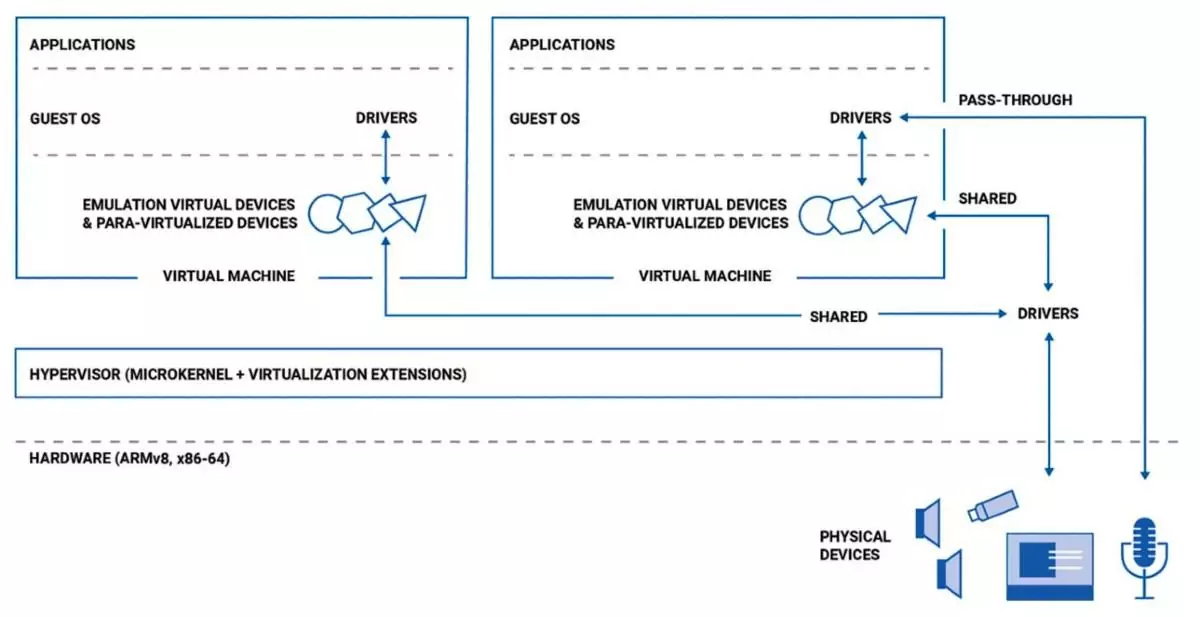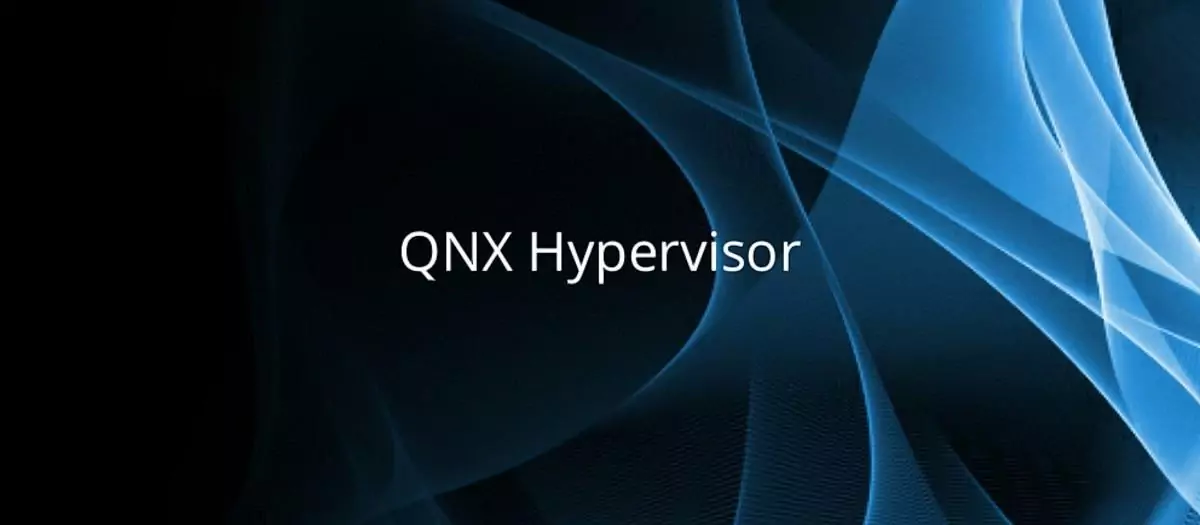BlackBerry has launched QNX Hypervisor 2.2, the latest edition of the company’s real-time embedded hypervisor product. With QNX Hypervisor 2.2, manufacturers and other embedded system suppliers are empowered with ultimate design flexibility and scalability to consolidate multiple systems with mixed criticality and different operating environments onto a single hardware platform, reducing both the initial development and long-term costs of ownership for a wide variety of embedded systems – from rail and robotics controllers to vehicle digital cockpits and battery management ECUs.
Based on the QNX Neutrino Real-time Operating System (RTOS) 7.1, QNX Hypervisor 2.2 supports the latest silicon enhancements for interrupt control, scalable vector extensions (SVE), cryptography and enhanced security, and offers features such as fast booting of critical system services before guest launch and priority-based sharing of hardware resources and devices. QNX Hypervisor 2.2 also adds to the extensive VIRTIO shared device support offered by previous QNX Hypervisor releases, including adding sources of entropy.
QNX Hypervisor 2.2 provides development teams with a robust and reliable hypervisor domain on which they can run Android and Linux distributions. QNX Hypervisor 2.2 can be scaled so that system architects can choose to run software in a virtual machine or alongside the virtual machine in the host domain. This flexibility allows developers to add Android and Linux to an SoC without compromising on features and performance while at the same time reducing system complexity.
Mission-critical applications can share host domain services (backends) with Android based on priority scheduling and therefore precisely control the guest’s behaviour. As with all BlackBerry QNX Hypervisor product releases, system architects also have full control over separation and isolation of guests and devices as well as deep insight into Hypervisor operations through the QNX Momentics Tool Suite.
“BlackBerry QNX has decades of experience powering mission-critical embedded systems across a wide range of industries. With the release of QNX Hypervisor 2.2, embedded software architects and developers can continue to rely on our secure and reliable foundational hypervisor software to enable their system consolidation knowing that we continue to work in lock-step with advances in silicon and shared device standards such as VIRTIO,” said Grant Courville, Vice President, Products and Strategy at BlackBerry QNX.

The QNX Hypervisor offers a comprehensive virtualization solution, including virtual memory, virtual CPUs, virtual interrupt controllers, and virtual and para-virtualized devices. It adds virtual machine management (VMM) to the QNX Neutrino® Real-time Operating System (RTOS) microkernel. So, when you design a system with the QNX Hypervisor, you are building on a foundation whose reliability and performance have been proven over 40 years in hundreds of millions of mission-critical systems.
The QNX Hypervisor protects itself and your system from both internal faults and outside interference, including from guests in its virtual machines. If through error or malicious intent a guest system attempts to overstep the boundaries you set, the QNX Hypervisor prevents the guest from completing the action.
The QNX Hypervisor includes the SMMU manager service (SMMUMAN), which works with your hardware System Memory Management Units (SMMUs) to ensure that Direct Memory Access (DMA) devices are contained.
The QNX Hypervisor leverages the latest ARMv8 and x86-64 hardware virtualization extensions to provide a supremely versatile virtualization solution. With the QNX Hypervisor you can run your OSs and their applications as guest systems in thin virtual machines, limiting your hypervisor to handling events and exceptions. Just as easily, you can run one or more guest systems in virtual machines, while also implementing a full system, including resource managers, drivers and applications, directly on the hypervisor (“bare metal”).
Devices in a QNX Hypervisor system can be physical devices (including pass-through devices), or virtual devices, including emulation and para-virtualized devices from our virtual device library. Not only can diverse OSs share the same SoC, they can share physical devices, reducing product hardware costs.
Whichever model you select as most appropriate for your project, the QNX Hypervisor ensures that the guest systems and the hypervisor itself are contained and isolated from the other systems on the SoC



